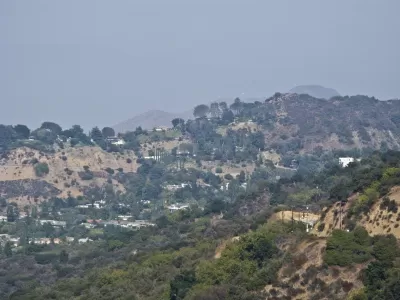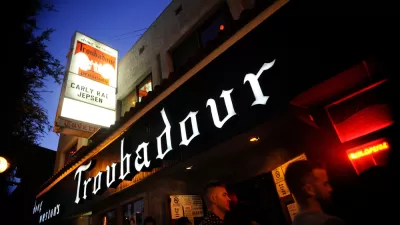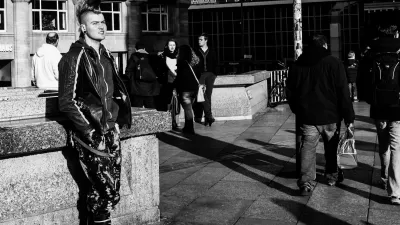A great many factors converged to create the culture and music of the 1960s. A powerful, but often overlooked, factor was the Los Angeles neighborhood of Laurel Canyon. A new documentary provides a case study in urban creativity.

"Multiple interviews over Laurel Canyon’s four-hour span refer to parties, jam sessions, and spontaneous dropping in. Many of the musicians of Laurel Canyon did not seek stardom. They sought to collaborate, to hang out. Music was their medium for doing both. Friends and strangers alike knocked on doors, guitar in one hand and a bag of grass in the other, and invited themselves in to jam, co-write, and collaborate. This was, of course, before cellphones made distance OK and Spotify made albums irrelevant. The artists of Laurel Canyon lived in splendid proximity."
"Here’s why this matters: designers and planners could never create Laurel Canyon, either in form or spirit. They could never envision ramshackle cabins, the Oedipal fury of Morrison, the extraterrestrial weirdness of Zappa, the thoughtfulness of Browne, or the bemusement of Crosby. They just cannot. But as they go about their important work, be it bureaucratic minutiae or large-scale envisioning, they should remember that places can be special—sometimes, very special."
FULL STORY: Laurel Canyon: The Classic California Urban Ecosystem

Study: Maui’s Plan to Convert Vacation Rentals to Long-Term Housing Could Cause Nearly $1 Billion Economic Loss
The plan would reduce visitor accommodation by 25,% resulting in 1,900 jobs lost.

North Texas Transit Leaders Tout Benefits of TOD for Growing Region
At a summit focused on transit-oriented development, policymakers discussed how North Texas’ expanded light rail system can serve as a tool for economic growth.

Why Should We Subsidize Public Transportation?
Many public transit agencies face financial stress due to rising costs, declining fare revenue, and declining subsidies. Transit advocates must provide a strong business case for increasing public transit funding.

How to Make US Trains Faster
Changes to boarding platforms and a switch to electric trains could improve U.S. passenger rail service without the added cost of high-speed rail.

Columbia’s Revitalized ‘Loop’ Is a Hub for Local Entrepreneurs
A focus on small businesses is helping a commercial corridor in Columbia, Missouri thrive.

Invasive Insect Threatens Minnesota’s Ash Forests
The Emerald Ash Borer is a rapidly spreading invasive pest threatening Minnesota’s ash trees, and homeowners are encouraged to plant diverse replacement species, avoid moving ash firewood, and monitor for signs of infestation.
Urban Design for Planners 1: Software Tools
This six-course series explores essential urban design concepts using open source software and equips planners with the tools they need to participate fully in the urban design process.
Planning for Universal Design
Learn the tools for implementing Universal Design in planning regulations.
City of Santa Clarita
Ascent Environmental
Institute for Housing and Urban Development Studies (IHS)
City of Grandview
Harvard GSD Executive Education
Toledo-Lucas County Plan Commissions
Salt Lake City
NYU Wagner Graduate School of Public Service




























